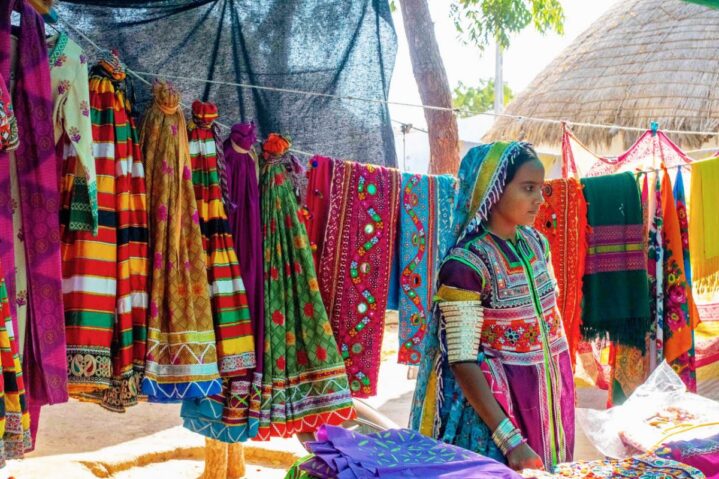
The Kutch Chronicles: A journey into the arts and crafts of Kutch
I was super excited to go to Kutch, it has been on my travel list for sometime now and I am happy I can finally tick it off. Although I grew up in India, it was not untilThe Kutch recently that I decided to travel solo to one destination in India whenever possible. I have been interested in fashion and textiles ever since I was a kid and the concept of ‘Farm to Fashion’ is intriguing to me. I wanted to go to the grassroots level of block prints, tie and dye and the stunning embroidery made by the women of Kutch.
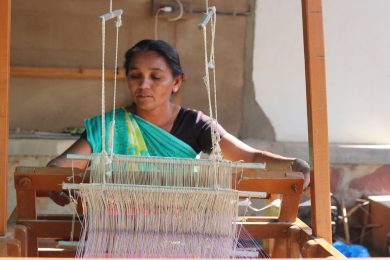
There are so many different textiles and crafts in this area which spans across forty-six thousand square kilometres of land, I have been to a few textile rich areas before but the astonishing diversity of crafts found in this area is perhaps unmatched anywhere in the world. Travelling within Kutch is time consuming because everything is spread out but I managed to see a few interesting textiles and crafts related villages in my six days there. From block printing to tie and dye, from bell making to woodcarving, Kutch has a colourful crafts tradition that has been maintained over the centuries by the communities that have migrated to this region. For anybody who has a love for crafts and textiles and wants to visit this region, I have shortlisted the villages you should include to your itinerary.
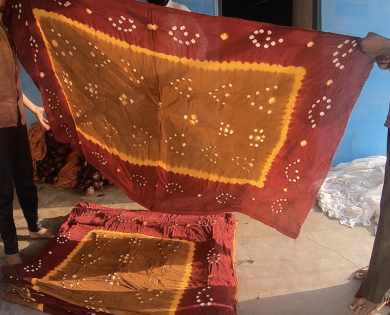
Tie and dye -Anjar:
Anjar, this a region best known for the Jesal Toral Samadhi and its very busy with many artisans at work. The art of tie and dye has been practiced in this region for centuries. I enjoyed visiting the factories or Khar Khaanas as they are called locally. Most people are extremely patient and they show you the entire process from dipping into the dye and tying it. There is a local market in Anjar to shop the finished products. You can also buy finished products directly from the factories.
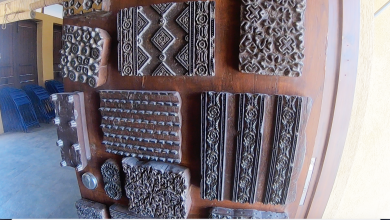
Blockprint – Ajrakhpur:
This was my personal favourite place. I love the different block designs used in this region, I probably shopped the most in this village. It is fascinating to watch the process of block printing that uses natural dyes made from turmeric, pomegranate, ink etc., to create endless yards of fabric. The printing blocks are carved and shaped with absolute precision and skill and the designs are beautiful. Traditionally, ajrak is the name of a block printed cloth with deep crimson red and indigo blue background, they have symmetrical patterns interspersed with sparkling white motifs.
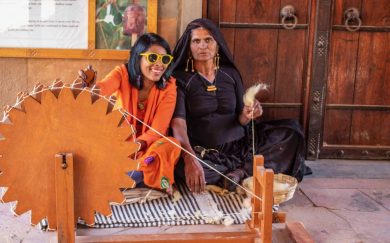
Khavda pottery:
This village is very popular for the famous flamingos and its a treat for wildlife photographers who love to click these beautiful birds in this unique landscape. It is very close to the Indian border. I visited a family which specialises in the art of making pottery. The terracotta pots of Khavda looked different from the ones I saw elsewhere, the lady whom I visited was unfortunately not well on the day I visited and could not show me the entire process but I definitely enjoyed visiting this remote village.
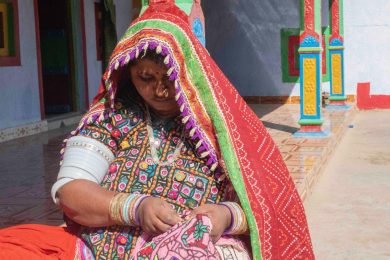
Ludiya:
Ludiya is one of the most beautiful villages I have seen. The main occupation of the womenfolk in the village is making lovely embroidery work and traditional crafts while the men make decorative furniture. I met a very enterprising mother and daughter here, I saw some pieces of cloth I wanted to convert into earrings. They understood what I wanted quickly and made 3 pairs of earrings for me in 30 minutes. The houses of the village have a typical structure called bhunga with intricate decorations both inside and outside. While the outside is decorated with vibrant motifs, the inside has had clay designs with mirror work. This village also had a small bazaar selling embroidered jackets, stalls etc.
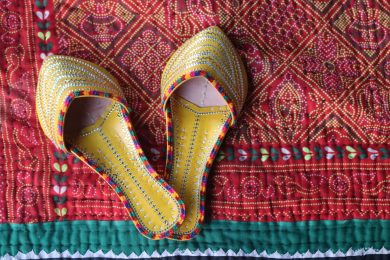
Hodka:
This is the village I stayed at near the Rann. There are so many beautiful tents and bhungas available for staying around this village. The women in this village make beautiful embroidery and there is a family which makes leather shoes using different textiles like mushroo silk, embroidered cloth etc. I saw so many different styles of embroidery, there are definitely more than 15 different styles I observed. As per reports by Shrujan which is an NGO in Kutch, there are around 16 different styles of embroidery identified in this region. You can buy the finished products directly from the villagers, I felt so close to the process of farm to fashion .
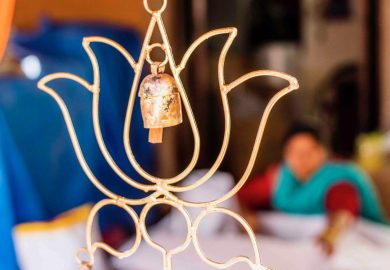
Jura copper bells:
There is a family in this village which specialises in making copper bells. They show you the entire process and all the different sounds each bell makes. They are made from scrap metal, the copper is moulded and crafted into bells of all shapes and sizes. No two bells are alike in their chimes which was extremely interesting for me, I keep ringing them and loved the differences in the sound. These bells were formally used for animals by pastoral communities but are now often used in urban homes as decorative pieces.
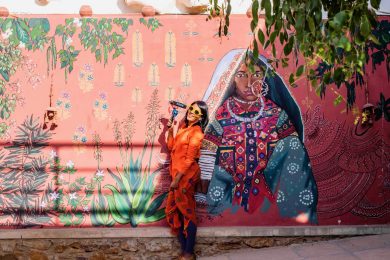
Nirona Rogan art:
The Khatri family in Nirona, a small village are the last surviving custodians of the art form but they told me that they have set up a school which teaches girls this art form. They are ensuring that this art survives because it is truly unique. The ‘Tree of Life’, is their signature painting and most in demand thanks to Prime Minister Narendra Modi who took it as a gift to the then U.S. President Barack Obama during his visit to America.
Recommendations for places to stay:
Ganeshbaugh: This is a beautiful bungalow amidst 30 acres of farm in Anjar. The price range is around Rs.2000 per person.
SharadBaug Homestay: This is a beautiful home stay in Bhuj, the price range is 1500Rs to 5000Rs.
Shaam E Sarhad: This is a property with beautiful Bhungas and Tents with a price range of 2000Rs to 6000Rs.



